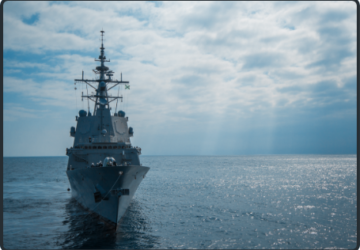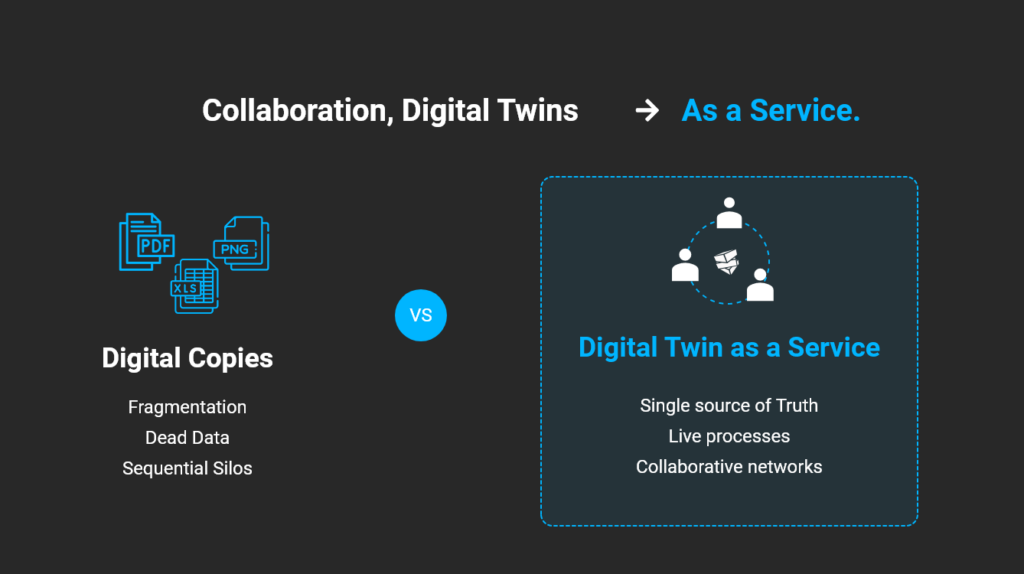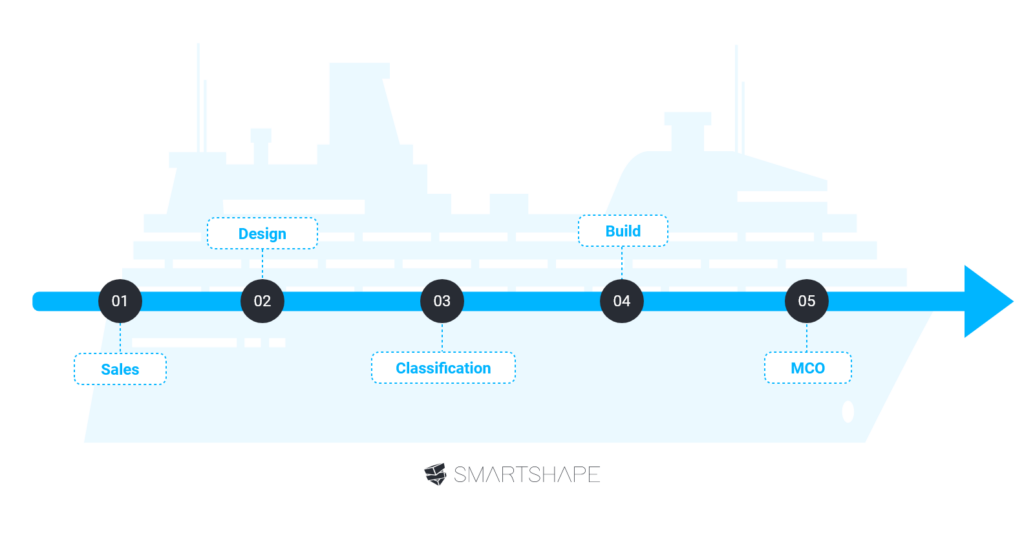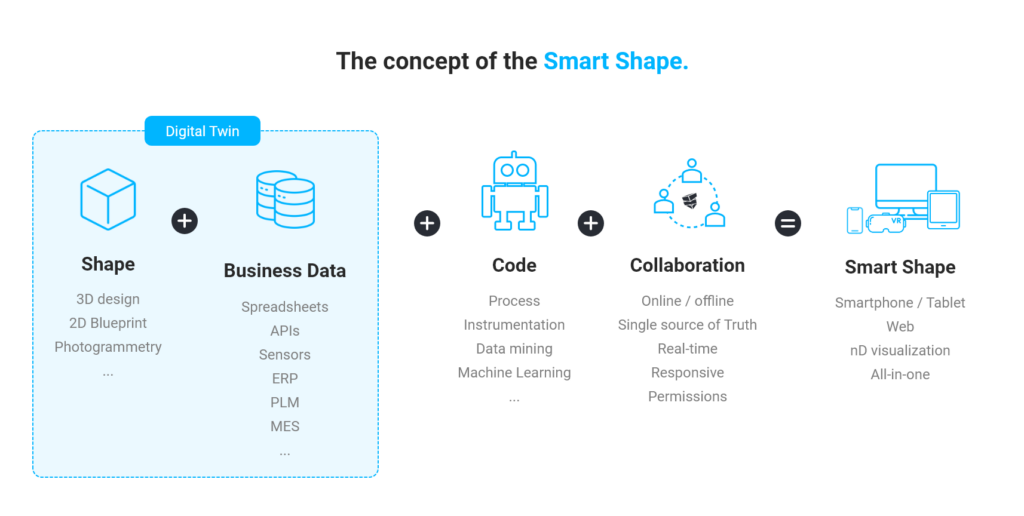SmartShape: the perfect partner for your naval architecture projects.
Request a demo


The shipbuilding sector covers a wide range of activities and types of ships
Fishing vessels
Pleasure boats
Ocean liners
Cargo ships
Research vessels
Military ships

Naval industry
SmartShape joins GICAN and becomes a member of the association
Read : 2 min - 18 July 2023

Expertise
Bureau Veritas operates classification on 3D model with SmartShape.
Read : 6 min - 12 September 2023

Customer case
How SmartShape Facilitates Multi-Stakeholder Project Management
Read : 4 min - 13 June 2024

Expertise
Overcoming obstacles to digital transformation in the industry
Read : 6 min - 21 August 2023

Naval industry
SmartShape in the Naval sector
Read : 4 min - 24 May 2023
3D modelling at the heart of shipbuilding.
Computer-aided design (CAD), 3D modelling, and computer-aided drawing and drafting (CADD) software are essential in naval architecture. These tools are used at all stages of shipbuilding:

Hull design

System design

Performance simulations

Visualisation of design concepts to plan the project and collaborate
Numerous software and file formats.
There are many software options on the market, including the well-renowned ShipConstructor, SmartMarine, Rhino3D, CATIA, SolidWorks, AutoCAD, Siemens NX, and Autodesk Inventor.
This profusion of tools reflects a booming market. The other side of the coin is that designers have to deal with multiple file formats: STEP, IGES, STL, OCX, 3DXML, etc. This diversity inherently produces complexity when it comes to combining all the design data for a shipbuilding project.
Our partnership with Chantiers de l’Atlantique
Focus on our collaboration with Chantiers de l’Atlantique

The SmartShape promise : encouraging the use of mass data and fostering collaboration between project players.
Document-free and paperless sites, where all the necessary information is shared by all.

Digital copies
Shipbuilding projects shared between print and digital documents do not benefit from a single, persistent frame of reference.. Information is spread across various media, and users can only view and modify their own copies, which automatically results in fragmented information and dead data. Dynamic or immersive views are either limited or impossible.
As-a-service digital twins
With SmartShape, all these difficulties are a thing of the past. Your project is hosted on a single collaborative platform for all users. They can all view and modify a single copy (no duplicates). Real-time collaborative work allows for rapid iterations, maximises the quality of the information exchanged, and reduces repetition, errors, and rectifications.
Manage the entire life cycle of your ship
The construction of a ship represents only a fraction of its actual cost. Operation accounts for 70 to 80% of the asset’s total cost. This is why SmartShape supports you throughout the life cycle of your ship.
The tool is designed to meet the requirements of the many professionals working on the construction of the ship. Operators can also manage their assets by monitoring all the data relating to their ships.

Size up your possibilities with SmartShape
Get in touch with our experts for a SmartShape demo tailored to your shipbuilding project.

SmartShape: an as-a-Service, self-hosted digital twin to manage your shipbuilding project.
SmartShape is a complete solution for managing your shipbuilding projects, enabling all stakeholders to work collaboratively on a digital twin:

Shape
The digital twin of your project integrates all the information components produced by the different teams, regardless of the software used and the formats generated: 3D files, 2D blueprints, photogrammetry, point clouds. Compatibility issues between tools such as 3DEXPERIENCE and Autodesk Revit are a thing of the past: you can now display data from these different software programs on the same model.
All this information is gathered and constitutes the Shape of your project.
Business data
The project players enrich the model by connecting to the SmartShape API. Whether derived from business software (ERP, PDM, PLM, MES), enclosed in proprietary databases, or produced by sensors (live monitoring) during the operating phase, the data is combined to bring the digital twin to life.
Visualise an Excel spreadsheet of your project, and imagine that all the data it contains is integrated into the digital twin to bring the Shape to life.
Code
SmartShape includes an API and programming language to communicate all the information sources used for your shipbuilding project. Thanks to the SmartShape API, you can easily connect your business databases or data from your partners, customers, and suppliers in order to integrate them into the digital twin.
By using all the data produced by all the stakeholders, you benefit from a digital twin that covers the entire project.
Collaboration
SmartShape is a collaborative tool offering stakeholders a real-time collaborative experience. As soon as an annotation or enrichment is added to the model, it becomes visible for all other users.
All information relating to the shipbuilding project is easily accessible to all teams and at all times.
Focus on the collaboration between SmartShape and Chantiers de l’Atlantique.
SmartShape has supported Chantiers de l’Atlantique throughout the design, construction, and operational monitoring phases of over ten ships.
The use of SmartShape has made it possible to optimise the classification process, which was initially based on iterative loops between the design offices of the shipyard and Bureau Veritas.
The 3D models produced in CAD were transposed into 2D blueprints so that the classification body could carry out its analyses and calculations. The updated blueprints were then sent to the design offices, which produced new 3D models, again transposed into 2D blueprints, and so on.
Bureau Veritas: approving ship designs with SmartShape
By using digital models, there is no need to generate multiple 2D drawings, which considerably speeds up the design verification process both for the shipyard but also for Bureau Veritas, which uses 3D models to automatically generate calculation models. In addition to this time-saving advantage, this new process improves the quality of the end product: all entities share a single data source, thus avoiding the inconsistency inherent in multiple revisions of the drawings.